Stop Overthinking Street Photography
Using Your Existing Gear to Make Great Images
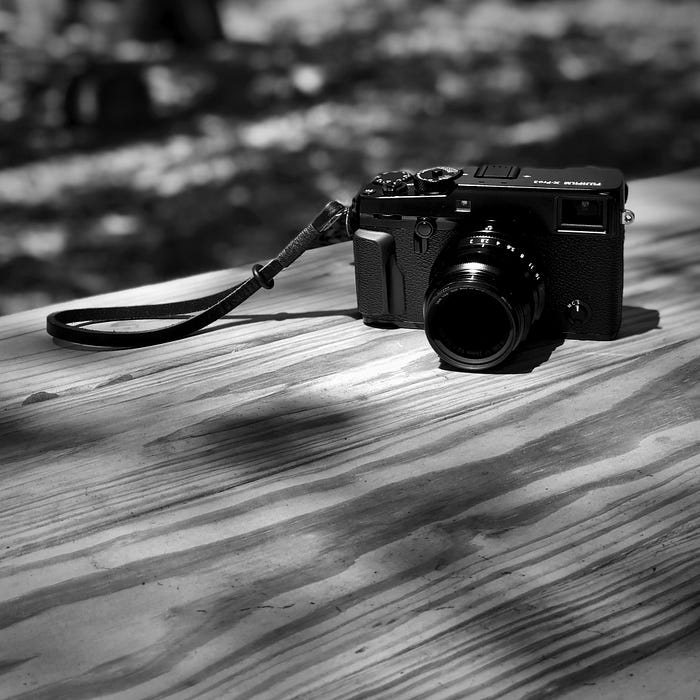 “X-Pro2 Portrait”, Photo Credit: Scott Houston
“X-Pro2 Portrait”, Photo Credit: Scott Houston
Introduction
I can provide you with seven distinct street photography strategies, an example of the gear I’ve used, and one of my favorite images captured with each strategy. These strategies are discreet and well-suited for street photography.
My gear illustrations are based on twenty years of experience doing street photography. I’m not interested in telling you which brand to use. Hopefully, you can translate my suggestions to your brands of preference. The best brands for you are the ones you already own or the ones that make you the most content and productive.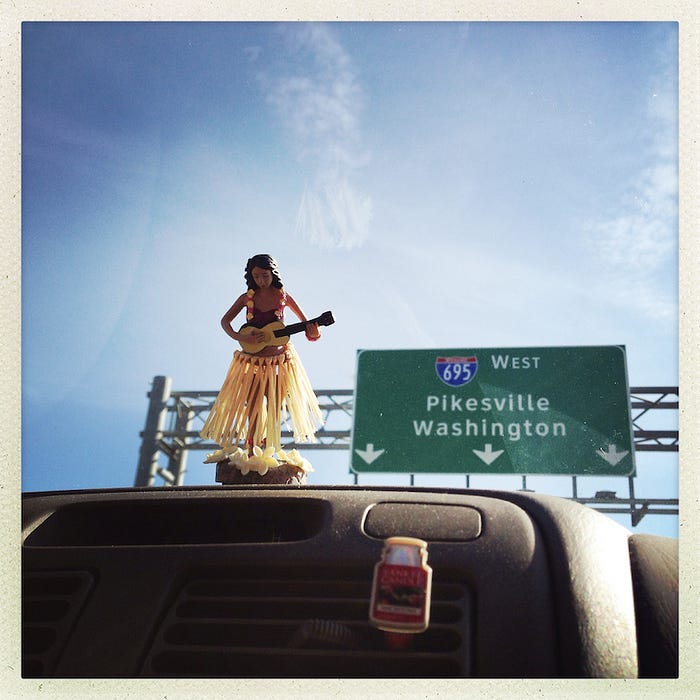 “Highway Hula”, Baltimore, 2014, Hipstamatic App on iPhone 5, Photo Credit: Scott Houston
“Highway Hula”, Baltimore, 2014, Hipstamatic App on iPhone 5, Photo Credit: Scott Houston
1. Smartphone
Smartphone cameras are ideal for street photography. In particular, any premium smartphone manufactured within the past five years should be able to provide high-quality images, without shutter lag, under reasonably well-lit situations.
At OPTIC West 2022, Scott Kelby suggested to the audience: “Change how you think about your phone’s camera.” Your smartphone camera is not just the camera you have with you or your backup camera. It is your real camera.
This will be controversial: If you have a premium smartphone, you are already well-equipped for street photography. There are many reasons you may want a camera other than the one on your smartphone, but there are few reasons you need one. I enjoy having several options, but I’ve been more intent on using my Apple iPhone 14 Pro lately.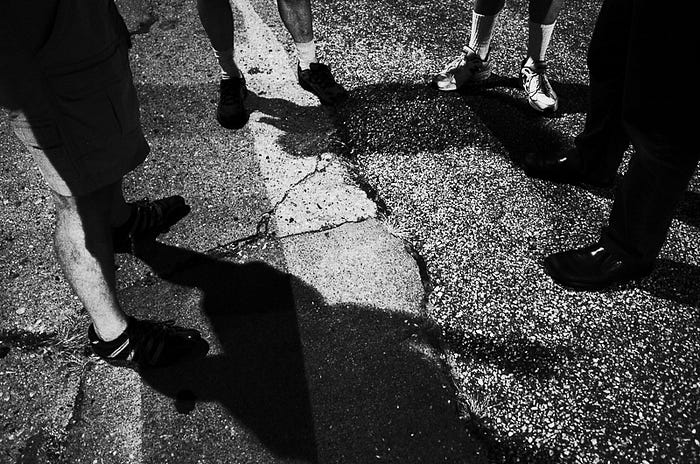 “Telling Stories”, Baltimore, 2016, Ricoh GR, 28mm Built-In Lens, Photo Credit: Scott Houston
“Telling Stories”, Baltimore, 2016, Ricoh GR, 28mm Built-In Lens, Photo Credit: Scott Houston
2. Point & Shoot
There are many point & shoot camera models on the market. I use a Ricoh GR that I purchased in 2013. The original Ricoh GR comes with a fixed 28mm equivalent lens. I believe that point & shoot cameras with dedicated, fixed focal length lenses are best suited for street photography. A fixed focal length helps me to concentrate on the scene — it’s one less decision when I am composing a shot.
No focal length is right or wrong. It is all about what works for you. It is common for street photographers to use focal lengths of 28mm, 35mm, or 50 mm. With that said, there is no reason you could not go out and use 20mm or 105mm and make a go of it. Be creative and forge your own style.
If you have a point & shoot with a zoom lens, it may work best for the way you shoot. Don’t get hung up on what other people use. If you already own a point & shoot, take it out and see how well-suited it is for your style of street photography. “Meanwhile”, Las Vegas, 2016, Fujifilm X-Pro2, Fujinon XF 23mm f/2 R WR, Photo Credit: Scott Houston
“Meanwhile”, Las Vegas, 2016, Fujifilm X-Pro2, Fujinon XF 23mm f/2 R WR, Photo Credit: Scott Houston
3. Mirrorless
I purchased my first mirrorless camera, the Fujifilm X-Pro2, and a 23mm lens in 2016. I was impressed with the performance and style of the Fujifilm X100 of the day, which had a built-in 23mm lens, but thought that the X-Pro2 would provide some flexibility should I want to use interchangeable lenses. Many excellent mirrorless cameras on the market take interchangeable lenses. If you buy a mirrorless camera with an APS-C sensor, such as the X-Pro2, I recommend a 23mm prime lens because it will give you a 35mm equivalent focal length. 35mm is a classic focal length for street photography and it is my personal favorite. Maximum apertures of f/2 or f/2.8 are sufficient and tend to keep the lens weight, size, and price down.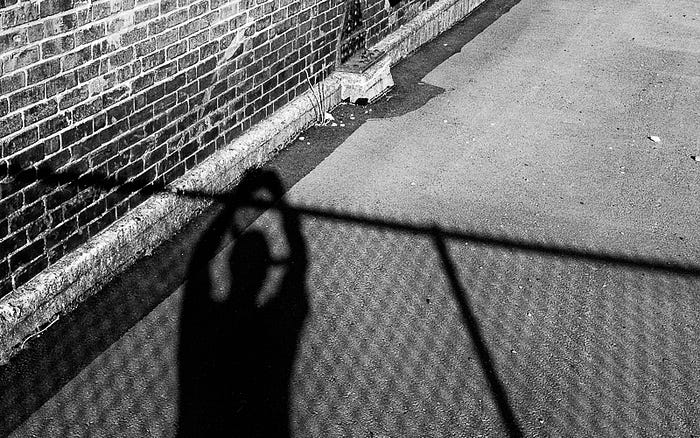 “Don’t Fence Me In”, Pennsylvania, 2013, Nikon D7000, Nikon AF-S DX Nikkor 35mm f/1.8G, Photo Credit: Scott Houston
“Don’t Fence Me In”, Pennsylvania, 2013, Nikon D7000, Nikon AF-S DX Nikkor 35mm f/1.8G, Photo Credit: Scott Houston
4. Crop Sensor DSLR
The Nikon D7000 is an APS-C camera that can take a lighter and less expensive Nikon DX lens. The 35mm DX lens is equivalent to an effective focal length of 50mm and is ideal for street photography. 50mm is a classic focal length for street photography. I like going wider, but 50mm is a very good choice, one chosen by many.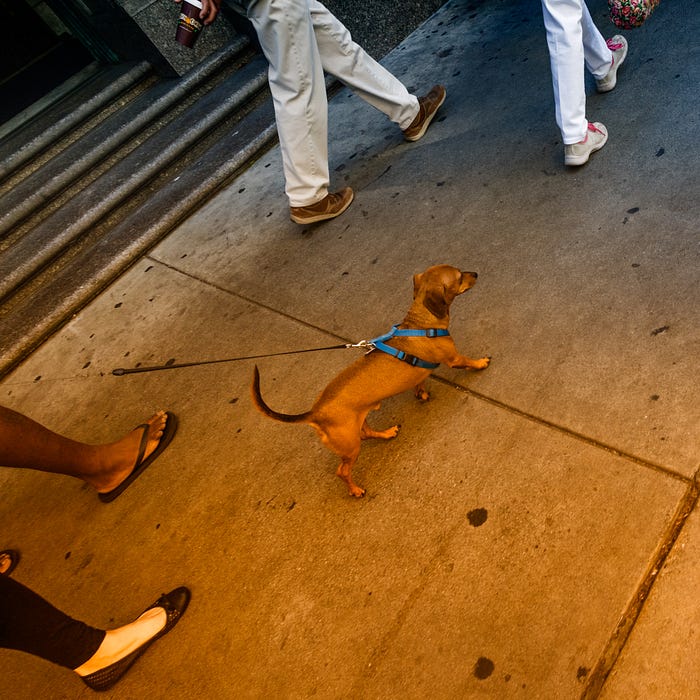 “Walk This Way”, Los Angeles, 2015, Nikon D750, Voigtlander 20mm F3.5 Color Skopar SL II, Photo Credit: Scott Houston
“Walk This Way”, Los Angeles, 2015, Nikon D750, Voigtlander 20mm F3.5 Color Skopar SL II, Photo Credit: Scott Houston
5. Full Frame DSLR
The Nikon D750 is a full-frame camera that can take advantage of Nikon’s vast array of FX lenses. Any of Nikon’s 35mm FX lenses are a perfect companion for the D750. In my experience, there is no need to use a fast aperture f/1.2 or f/1.4 lens. I used a manual focus Voigtlander 20mm pancake lens in my photograph. The D750 is relatively compact for a full-frame camera, and the pancake lens is a great complement because it is so small. 20mm is fairly wide, but it can work well for some. “Weeds in February”, Baltimore, 2019, Nikon FM2, Voigtlander Ultron 40mm f/2 SL-II, Photo Credit: Scott Houston
“Weeds in February”, Baltimore, 2019, Nikon FM2, Voigtlander Ultron 40mm f/2 SL-II, Photo Credit: Scott Houston
6. SLR Film Camera
The Nikon FM2 is a classic film camera that can be paired with any of Nikon’s F-Mount compatible lenses. There’s no autofocus capability on the FM2. Any manual or autofocus F-Mount lens with a focal length between 20 and 55mm would be a good choice.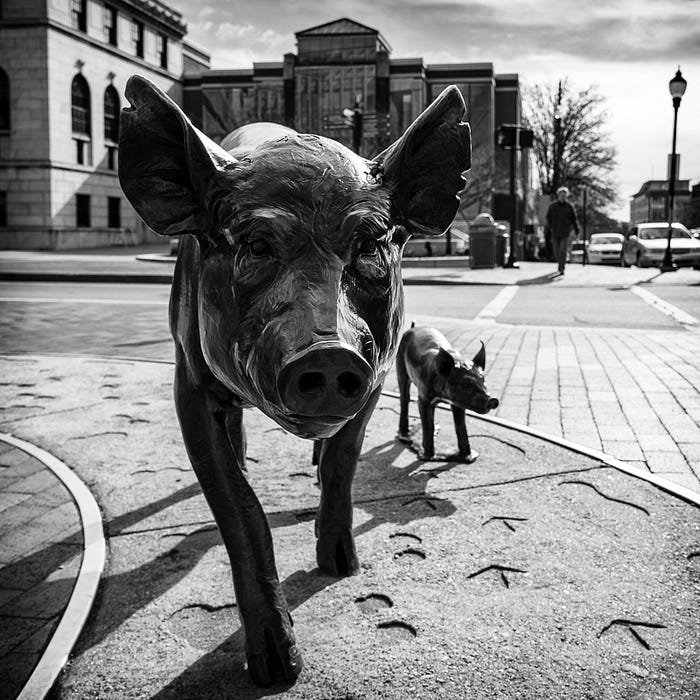 “Pig Noir”, Asheville, 2015, Nikon D750, Nikkor 24–120mm f/4G ED VR at 24mm, Photo Credit: Scott Houston
“Pig Noir”, Asheville, 2015, Nikon D750, Nikkor 24–120mm f/4G ED VR at 24mm, Photo Credit: Scott Houston
7. Something Else
You may need to do something else. If you have an old Canon Rebel with a kit lens, take it out and use it. In daylight, at f/8, it’s all the same. If you have a cheap lens, use it. There are photographers out there looking for a creative inspiration who may be thinking about buying that same cheap lens because they feel it gives them something they can’t seem to get with the latest professional lens. It’s okay if you don’t have money to spend on gear or if you love to spend money on gear. Go out and create something extraordinary. In the photos I’ve included, I had to go back and look at the metadata to determine which gear I used to make the photograph. In the end, it doesn’t matter as much as you might think.
Conclusion
There’s something I’ve learned that I wish I had known sooner. Every time you buy new gear, you must learn, practice, and get your mind to operate the camera in a way that enables you to be creative without struggling with the camera settings. Then you must figure out what to do with your old gear. Don’t fall into this trap. At least don’t fall into this trap often. Find something that works, and stick with it.
Spend your time learning and enjoying your craft. You’ll be glad that you did. Regardless of your stage in your photographic journey, if you spend all of your time planning to buy or learning to use the next greatest thing, you will not be able to get out to master the gear you have and create the images you are going to love.
I’ve spent my fair share of time researching and comparing camera gear. Many photographers fall into this trap. I wanted to give you some strategies to help you think this through. Stop overthinking your street photography gear and use what you have to make great images.



































